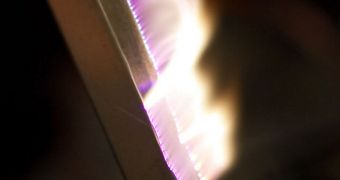Scientists from the University of California in Davis (UCD) and the US Department of Energy's Princeton Plasma Physics Laboratory (PPPL) say that they have developed a way of visualizing waves that form inside nuclear fusion plasma. Their method is based on technology used in TSA full-body scanners, airborne radars, and car sensors.
With the aid of the new tool, nuclear physicists will be better able to identify, understand, and manage plasma instabilities that occur under the extreme pressures and heat needed to achieve nuclear fusion. A proof-of-concept for the tool revealed exquisite details never-before seen in plasmas.
The technology, called millimeter-wave imaging reflectometry (MIR), blasts the plasma with radio wavelengths, and then measures how the frequencies are reflected off small density fluctuations inside this state of matter, EurekAlert reports.
“The 2D and 3D structure of plasma fluctuations are important components of the magnetohydrodynamic (MHD) theory that allows us to predict the behavior of a future burning plasma fusion power plant,” explains PPPL physicist Benjamin Tobias, a member of the research team.

 14 DAY TRIAL //
14 DAY TRIAL //